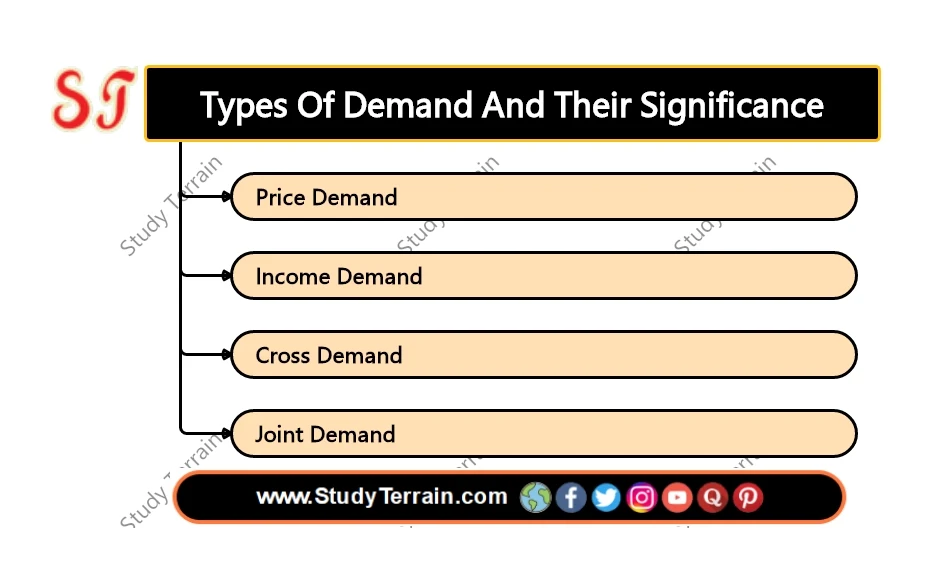In the field of economics, demand is a fundamental concept that reflects consumers' willingness and ability to purchase goods and services at various price levels. However, demand isn't just a single, straightforward concept; it can manifest in different ways depending on various factors. we'll explore the different types of demand and their significance in understanding consumer behavior and market dynamics.
Table of content (toc)
Types Of Demand And Their Significance
 |
| Types Of Demand And Their Significance - Study Terrain |
Price Demand
Price demand is perhaps the most intuitive type of demand—it refers to the relationship between the price of a product and the quantity demanded by consumers. According to the law of demand, as the price of a good or service increases, the quantity demanded decreases, and vice versa. Price demand is graphically represented by a downward-sloping demand curve. This type of demand is crucial for businesses in setting prices and forecasting sales.
Income Demand
Income demand relates to how changes in consumers' income affect their demand for a particular good or service. There are two main categories within income demand:
Normal Goods
For normal goods, as consumers' income increases, their demand for the good also increases. These goods include items like luxury cars, vacations, and restaurant meals.
Inferior Goods
Inferior goods are those for which demand decreases as consumers' income increases. These goods are often of lower quality and are typically replaced with better alternatives as income rises. Examples include generic store-brand products and public transportation.
Understanding income demand helps businesses tailor their marketing strategies and product offerings to different income segments of the market.
Cross Demand
Cross demand, also known as cross-price elasticity of demand, examines how changes in the price of one product affect the demand for another product. There are two main types of cross demand:
Substitute Goods
Substitute goods are products that can be used as alternatives to each other. When the price of one substitute increases, the demand for the other substitute increases. For example, if the price of coffee rises, consumers may switch to tea instead.
Complementary Goods
Complementary goods are products that are used together. When the price of one complement increases, the demand for the other complement decreases. For instance, if the price of printers decreases, the demand for printer ink cartridges may increase.
Understanding cross demand is essential for businesses to anticipate the effects of price changes in related products.
Joint Demand
Joint demand occurs when two or more goods are demanded together because they are used together or are complementary. For example, cars and gasoline have joint demand because cars require gasoline to operate. Businesses that produce complementary goods must consider joint demand in their production and marketing strategies.
Conclusion
The different types of demand in economics provide valuable insights into consumer behavior and market dynamics. By understanding how price, income, and the relationships between products affect demand, businesses can make informed decisions about pricing, production, and marketing strategies. Moreover, policymakers can utilize demand analysis to design effective policies that promote economic growth and stability. Ultimately, a thorough understanding of the various types of demand is essential for navigating the complexities of the marketplace and meeting the needs of consumers.
For more content visit KMBN 102



